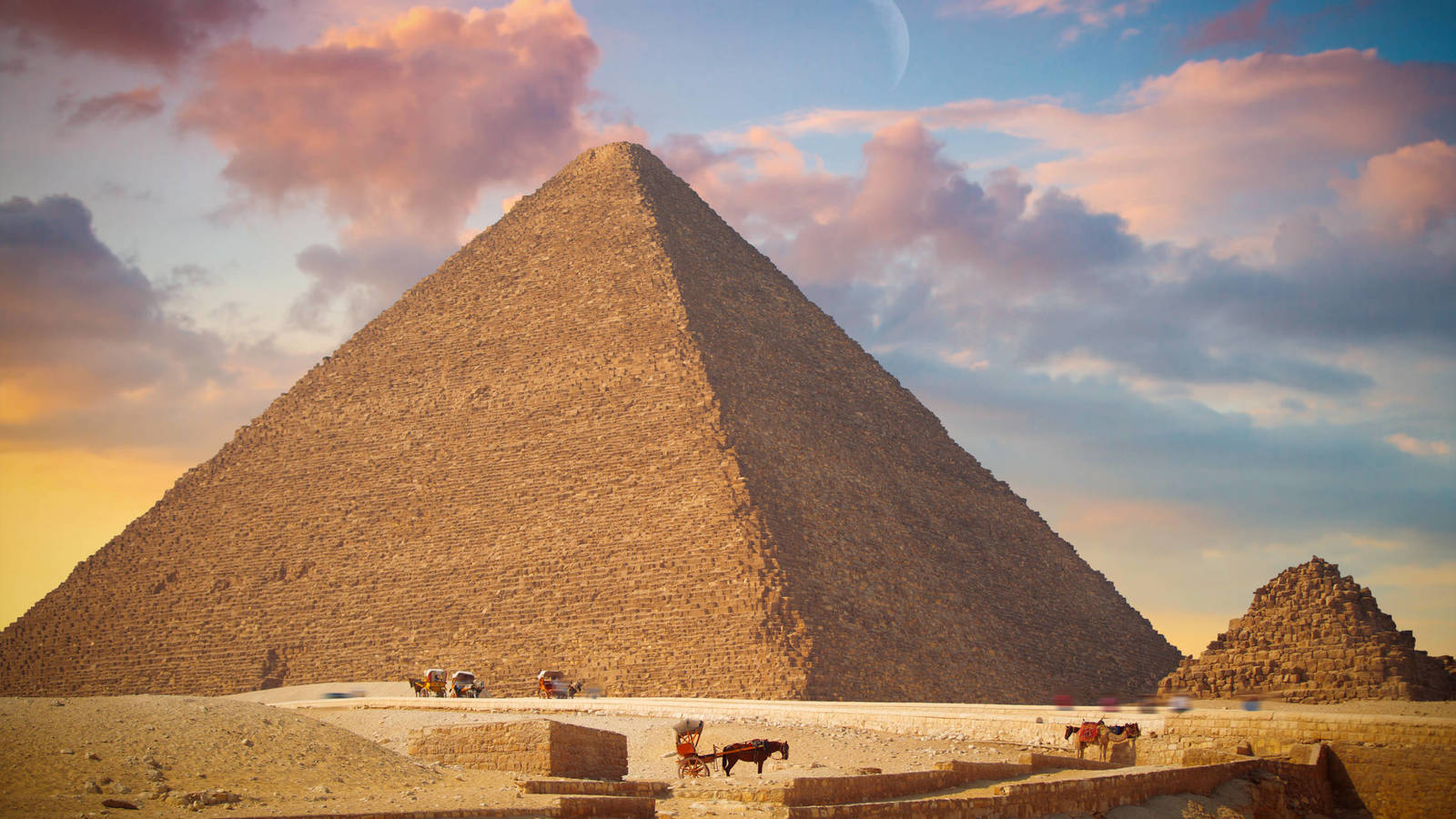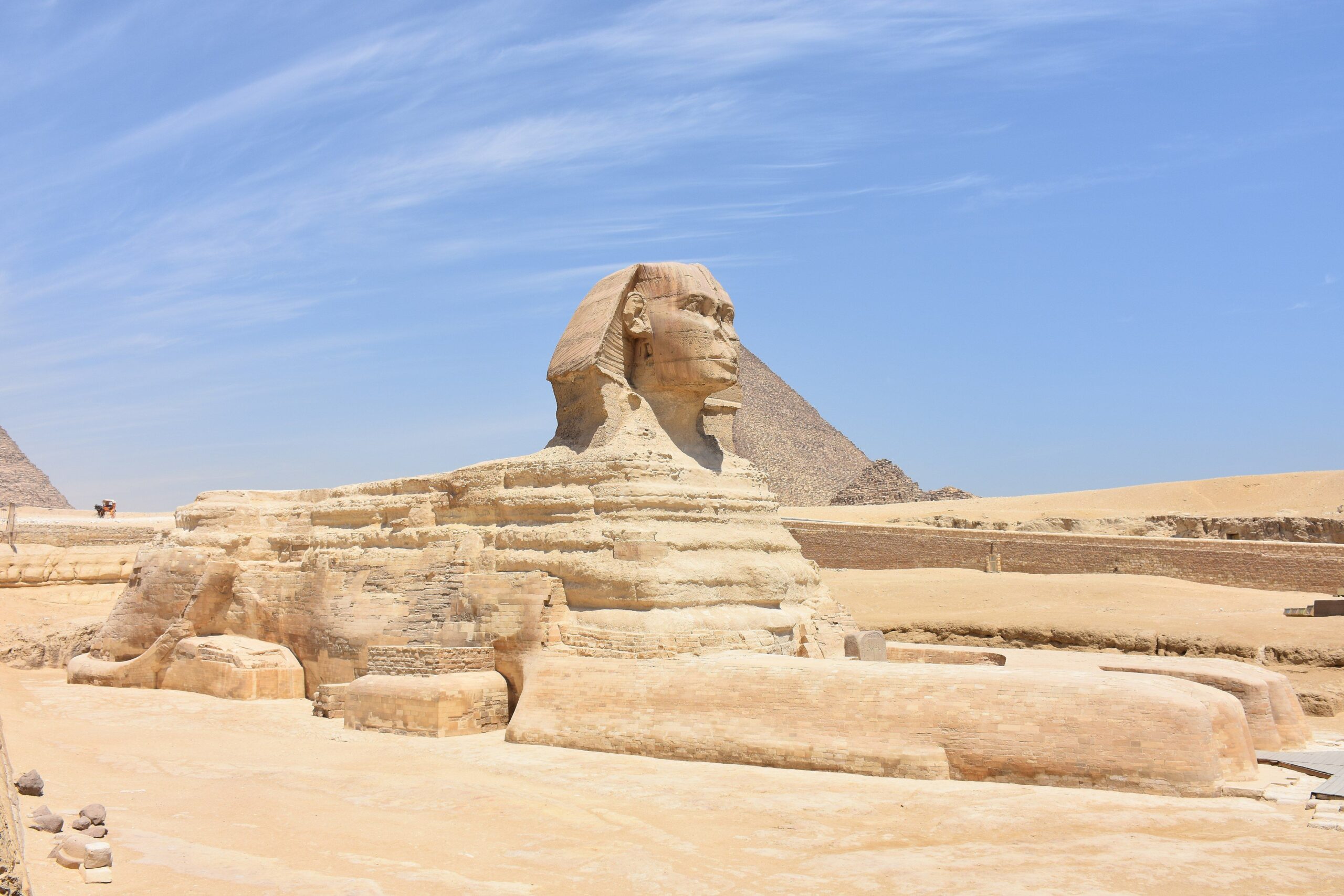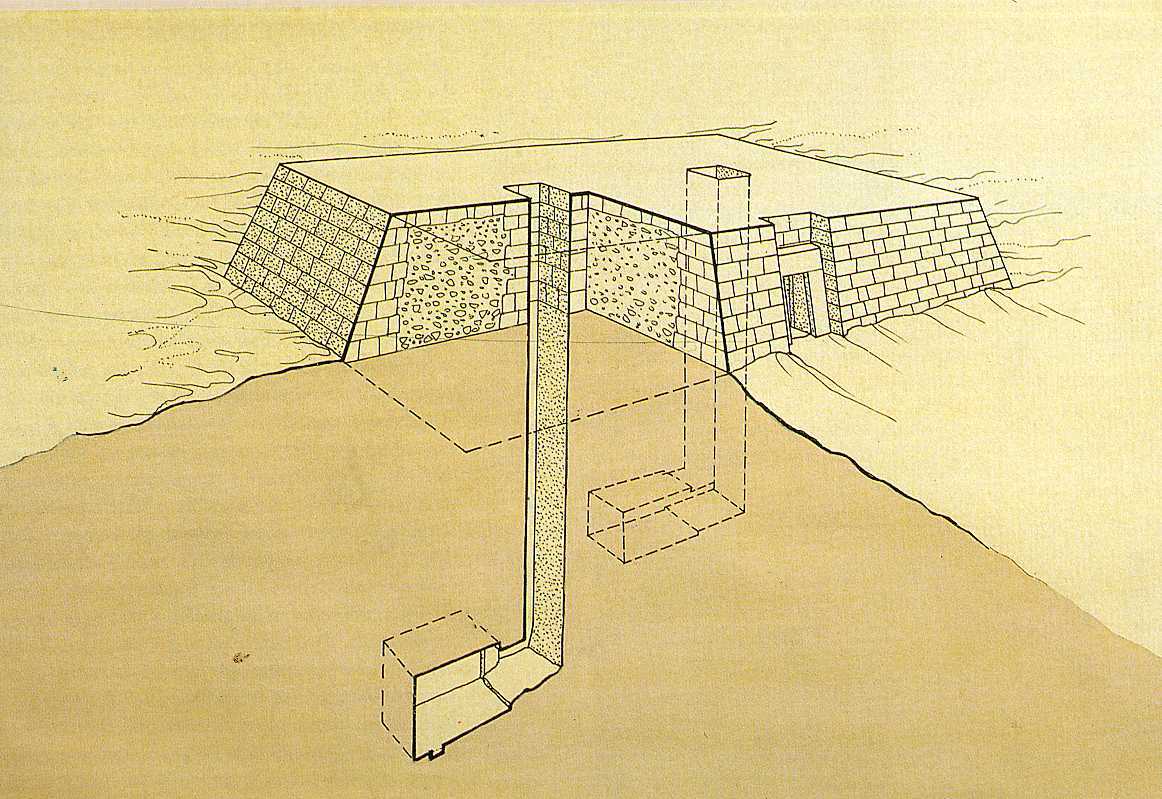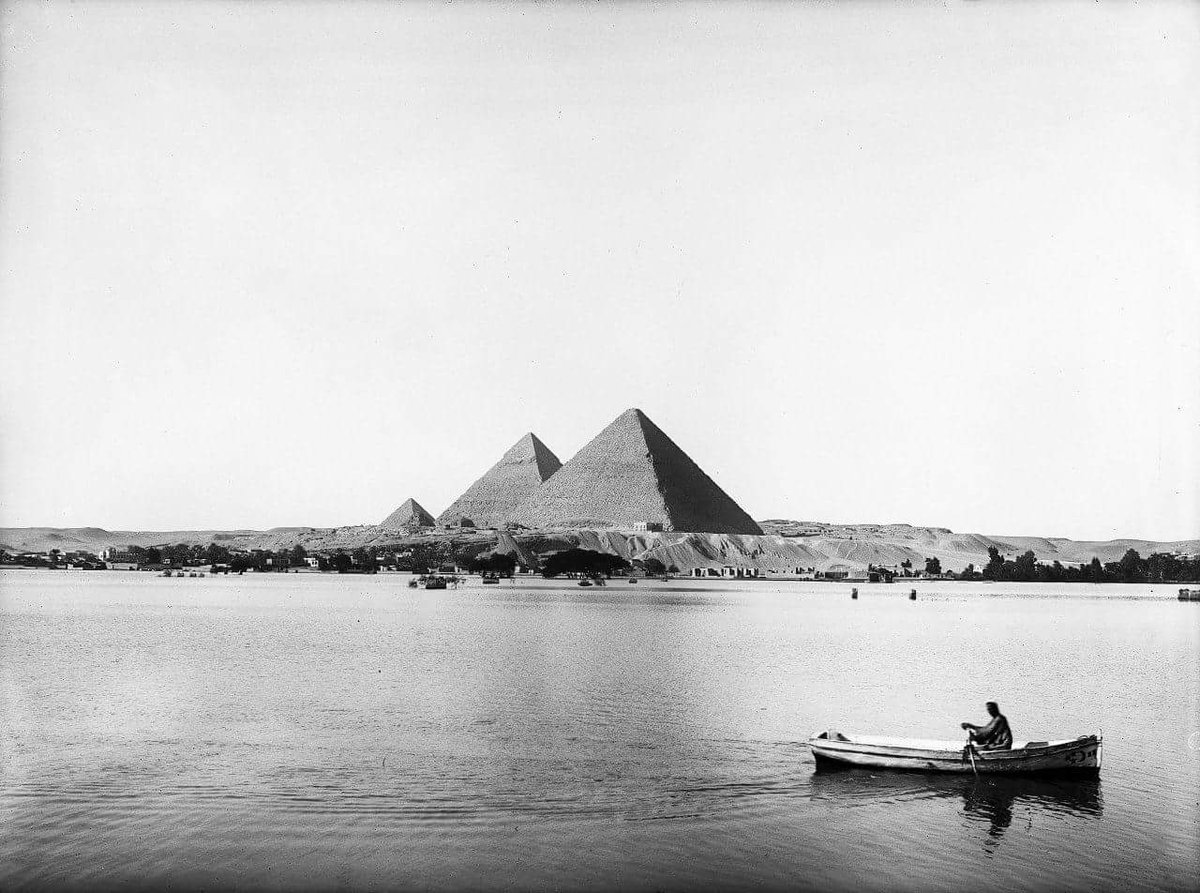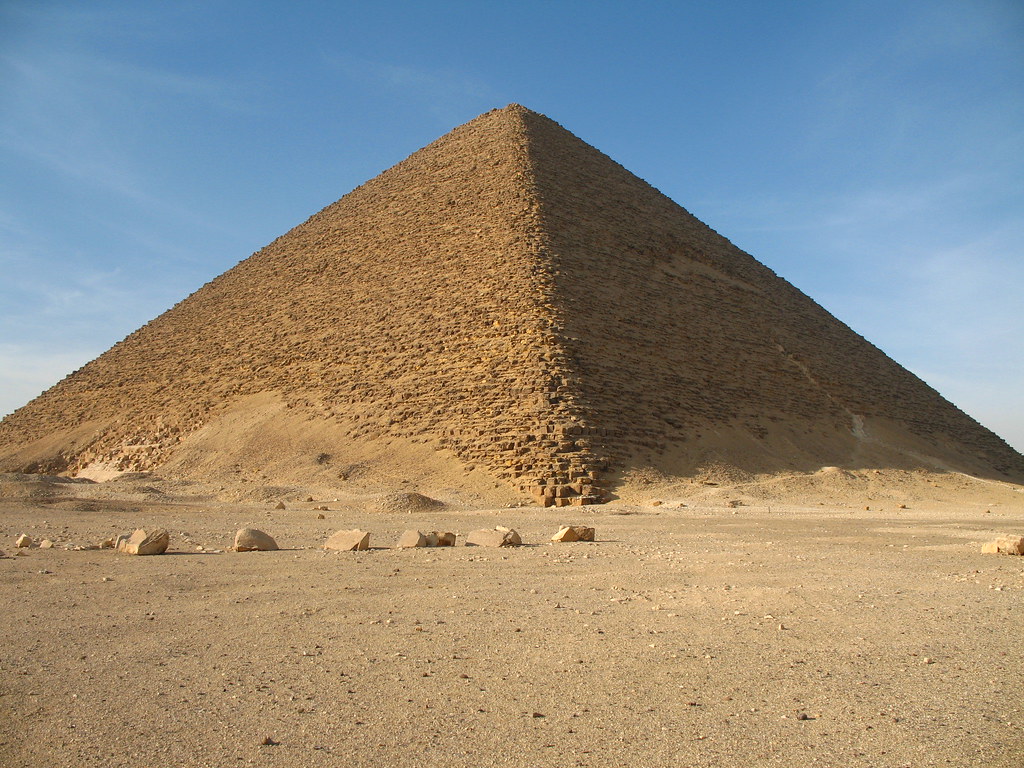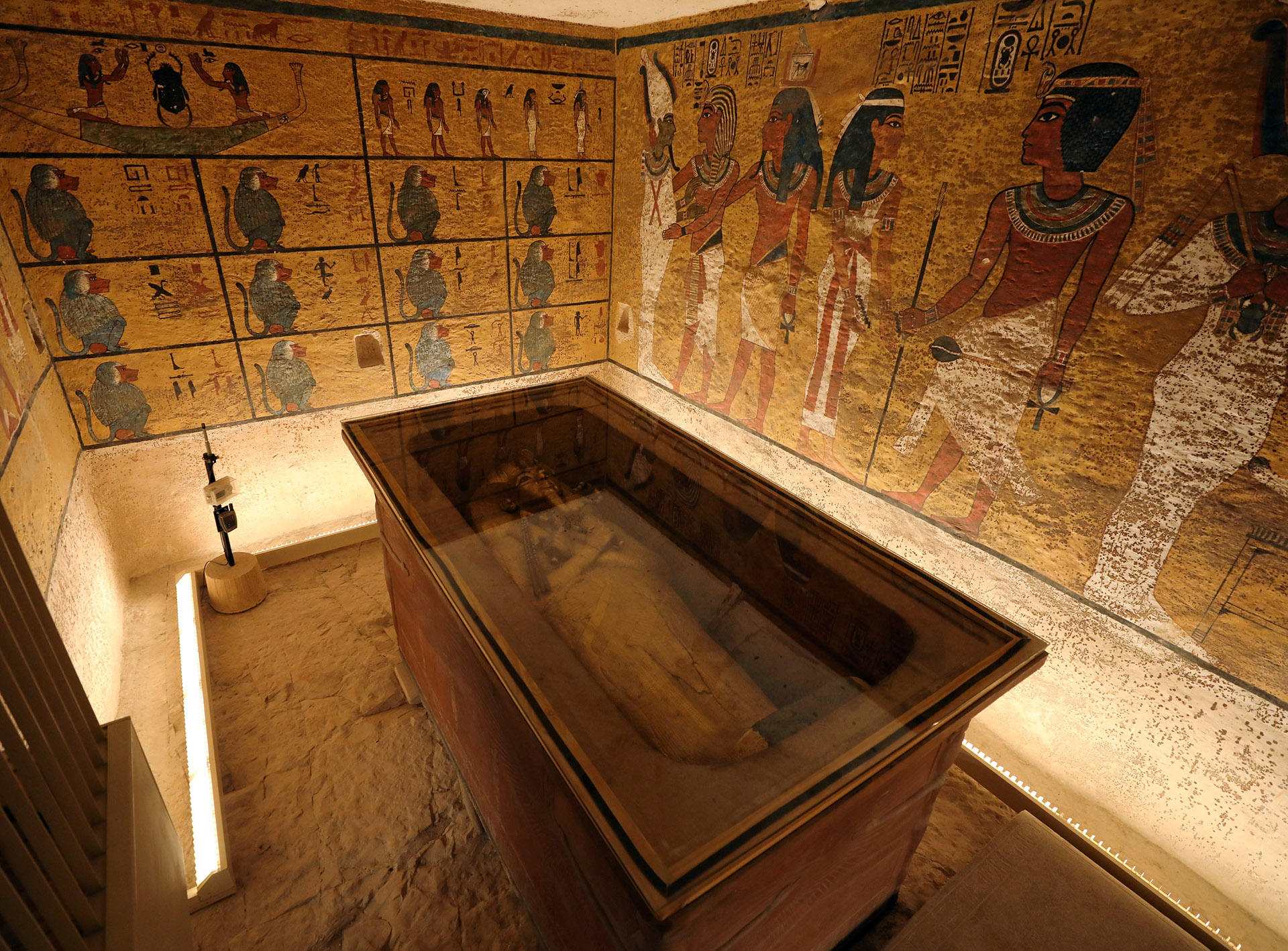Since the beginning of the creation of humanity, there have been countless civilizations that have contributed to world culture, the Egyptian is one of them. For this reason, it is extremely important to be aware of the Egyptian Pyramids and Funerary Architecture. Stay with us and let's all learn about it together!
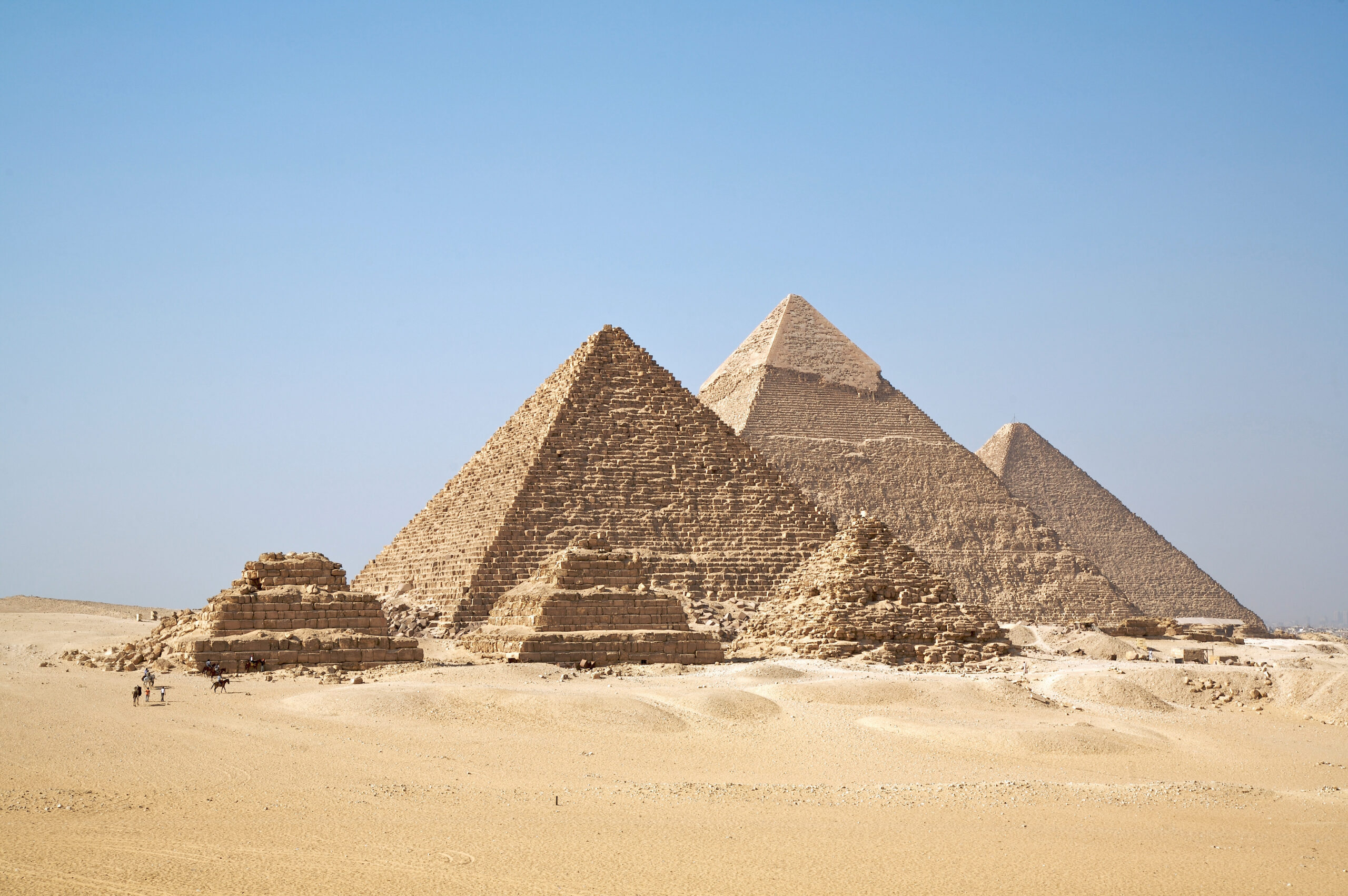
Pyramids of Egypt and Funerary Architecture
Undoubtedly, the Egyptian civilization gave the rest of humanity endless contributions in terms of science and culture, one of these was architecture. In Ancient Egypt, architecture was characterized by having established a whole construction system in its monumental buildings.
This was done through the use of a large number of ashlars carved into huge blocks and robust columns. In order to understand its greatness, certain ideological conditioning factors must be taken into account, such as the deeply centralized and hierarchical political power, coupled with the deep-rooted religious concept of the immortality of the pharaoh in what is conceived as the "other life".
With regard to the technical constraints, that is, the mathematical and mechanical knowledge, sometimes quite disturbing for the time, the existence of artists and craftsmen with impressive experience could be mentioned, as well as the abundance of easily carved stones.
Within the most emblematic buildings of monumental Egyptian architecture, we find the extraordinary pyramids, the imposing temples and the solemn tombs, whose magnificence varied based on the social class of the person who was going to be buried. In fact, many tombs of their pharaohs were built as a kind of pyramid.
The best known are attributed to the pharaohs Seneferu, Cheops and Khafre. As for the pyramid of Khufu, also called "The Great Pyramid of Giza", it is known as the only one of the seven wonders of the Ancient World that still exists. This is a clear example of the degree of improvement reached by the Egyptians in the area of applied sciences.
In the same way, gigantic palaces were also built for the greater comfort of the reigning pharaoh, only that earthly life was considered of less importance compared to that of the afterlife. For this reason, stone was not used as the main material in these and, consequently, they have not had the same lasting destiny.
However, to understand even more about the Egyptian pyramids and funerary architecture, it is necessary to delve into the relationship that the Egyptians had with death. According to their beliefs, the body was treated as an essential part of existence, so it had to be preserved to ensure that the life of the deceased would be safe in the afterlife.
From there arises the culture of mummification. However, these were not so easy processes at first, since a stable and, above all, safe space was required, in which the mummy could be kept. Otherwise, it wouldn't make any sense.
That is why its funerary structures had a constant evolution over time according to three primary objectives: to simplify the journey of the deceased, to make reference to some religious myth and to prevent the entry of thieves, who found the treasures of the dead quite tempting. the pharaohs
Despite the fact that, although it is true that Egyptian architecture during the three long millennia of its existence had very strict guidelines, that does not mean that some changes were not appreciated in it over the years. Therefore, we could divide its history based on its types of constructions.
From the most primitive, the mastaba, through the most famous, the pyramid, and the last, the hidden hypogeum. Next, we will develop each one and the most representative works of him:
the mastabas
In the beginning, between the pre-dynastic and proto-dynastic periods (4000 BC – 3200 BC), the tombs of the Egyptian people were basically simple oval-shaped pits. Frequently, these holes were lined with animal skin and the deceased is deposited in the company of a small trousseau distributed among different vessels.
Once the entire process was finished, the body was covered with a large mound of sand, all in allusion to the original hill of the Egyptian cosmogony. Gradually*, this burial mound was replaced with brick structures named “Mastabas”, from Arabic, and whose meaning in Spanish is bank.
This tomb model, the oldest in Egypt, is conceived as an architectural typology faithfully linked to the nobility of civilization: pharaohs, priests, high-ranking state officials, etc. It should be noted that, for the burial of Pharaoh Menes of the First Dynasty, his tomb responded to this model.
The first examples were built with raw adobe bricks and straw, but very soon they became completely made of stone. In itself, they were inspired by the shape of ancient Egyptian houses, they were a kind of super structures similar to a trapezoid with a rectangular base and talus walls.
The entrances of the mastabas gave access to a small chapel where the relatives were in charge of depositing multiple offerings to their deceased, so that they could enjoy them in the other world. Behind her was a false door decorated with paintings and reliefs that represented the symbolic entrance to the afterlife.
Inside the superstructure, there was also a room called Serdab, in which the funerary statue of the deceased, better known as "Ka", was housed. Beneath it we find a well that, in general, was sealed with edges and allows access to the funerary chamber that protected the sarcophagus.
Over the years, each of these constructions little by little became something much more complex, that is, multiple underground rooms, more noble coatings and one or another body was made with limestone instead of the use of stone. of brick
All the interior decorations tended to be represented both with topics of the daily life of the deceased, and with sacred texts. In this way, it sought to be a guarantor of the prosperity of people outside this plane. Mastabas remained in the arena of Egyptian funerary architecture until the establishment of the New Kingdom.
They were a fairly characteristic artistic representation of Lower Egypt, as can be seen in the City of the Dead or the Cairo Necropolis, very close to what was once their capital, Memphis. Only, from the Third Dynasty, the pharaohs stopped burying themselves in them, because the sovereigns wanted to mark the economic differences* between them and their subjects.
The pyramids
Although the mastabas were clearly the tombs of high society par excellence, the pyramids were, without a doubt, the most representative funerary element of the Egyptian sovereigns. Egypt's pyramids and funerary architecture emerged as such in the Old Kingdom period.
This was due to the immense desire that civilization had to represent the celestial stairs (or ramps as they were known in posterity) that were formed from the rays of the sun, and through which the pharaohs would ascend to the place they belong, heaven.
Likewise, in the past, its summit was proposed as a clear image of the original hill, just as mastabas and other more archaic burial methods were considered. They were basically conceived as a kind of religious and undoubtedly political symbolism, with the main purpose that it would last over time.
As for its religious symbolism, we refer to the sun god "Ra" in all its splendor. Ra is located at the top of these and reaches the ground through its sides, also covering the entire Egyptian territory. On the other hand, the politician would be the relationship that we find between the different divinities and the pharaoh.
In themselves, the pyramids lacked a façade, and inside we hardly found some rectilinear corridors that crossed the massive stone structures, which only opened into narrow funerary chambers. Once the burial took place, both these corridors and their entrances were completely closed and hidden.
Many experts today consider them as a totally closed mass, buildings that do not have any kind of doors or manifestations to the outside. At the foot of most of the ancient pyramids, complexes or temples are built where specific spaces were created.
Each one had a specific function, such as: attending to the deceased pharaoh, performing religious cults and rites, and storing his wealth and water so that he could "drink". At that time, in Egypt there was a covered processional way that connected all these dependencies through a pier, right next to the Nile River.
The first pyramids made in the history of Egypt are those of Pharaoh Djoser of the III dynasty, and those of Seneferu of the IV dynasty. Zoser, also known as Dyeser, has been one of the most emblematic rulers of Ancient Egypt. This, during his tenure, commissioned the construction of the Pyramid of Saqqara to the learned architect, Imhotep.
It was the first time that clay bricks were replaced by limestone blocks. This has six ascending steps, and a height that revolves around 60 meters. In addition, the title of precursor in the field of stepped-type pyramids is attributed to it, which owe their shape to the superposition of the mastabas.
The transition to what is known as the true pyramid, as previously mentioned, occurred in the time of Pharaoh Seneferu, in the Dahshur necropolis. This was the famous Bent Pyramid, known in the world as one of the first geometric pyramids that was created.
However, it is important to emphasize that it never became such, since a little more than halfway through the construction, its angle of inclination was reduced. The other pyramid that this same pharaoh developed at his command was that of Meidum, only in a truncated form because its smooth lining was stripped away long ago.
The Red Pyramid was given the title of the first one that was built geometrically perfect and on a ramp, it was also made by Seneferu. She is an essential part of an entire funerary architectural complex, whose concept became a tradition in Egyptian architecture.
It basically consisted of four fundamental parts: the Valley Temple, a place where the flood waters of the Nile River arrived, the Causeway, which is where the construction is accessed, the Funerary Temple, a building adjacent to the royal tombs and , finally, the Pyramid as such.
This trend of making sublime geometric pyramids, reached its goal even more with the arrival in the world of the Pyramid of Cheops, included among the 7 wonders of the ancient world. Currently, this is the only one of the seven that has lasted through time.
When we talk about it, we refer to the most important of all, with an approximate measurement of 146 meters in height. Its entrance is located about 18 meters high. Additionally, next to it are three other pyramids belonging to three different pharaohs of the IV dynasty: Cheops, Khafre and Micerino.
As for the eastern side, there are vestiges of a temple and a funerary city, especially created for workers, priests, among others. Almost nothing of it has been preserved over the years. To create this huge mass of stone, around 2.3 million stone blocks had to be moved, weighing between 2.5 and 45 tons.
Likewise, it is essential to make it clear that it is the third type of pyramid, and the most common of all, the one with a straight slope. Among its most famous representatives we could mention the imposing pyramids of Gizeh pyramids, also called the Giza Necropolis, located about twenty kilometers from the city of Cairo.
Later, due to the urgent need to reduce costs, the pyramids were built in a similar way to a limestone shell with an interior made entirely of adobe bricks. What had been used to doing, for example, the gigantic size of their structures, had to be reduced at the same time that the reliefs on the various walls that made them up were increased.
At that time, it was when the numerous texts in the pyramids arise. In the same way, the tomb robbers continued desecrating their interiors, therefore, in the Middle Kingdom, a wide and sophisticated system of labyrinths, traps and secret chambers is introduced into their architectural plans.
The materials used were not necessarily obtained in these complexes, one after another reached the hands of the workers and architects through the local port, located so that their arrival was as efficient and rapid as possible for everyone.
In fact, given the importance of its funerary structures, both the pharaoh and his families used to visit or even live in the surroundings, so the existence of royal residences or palaces was not unusual. And, despite the many efforts of engineers and builders, the pyramids were still very striking.
That is why grave robbers continued to put the stability of their deceased at risk. Consequently, the nascent pharaohs of the New Kingdom opted for the resumption of the burial of bodies. In this way, the establishment of the Valley of the Kings began.
the hypogea
As explained in the previous section, due to the continuous looting of the ancient pharaonic tombs, and how much was spent on their construction, quick and forceful decisions had to be made. As a result, the hypogea emerged and triumphed with great ease.
This kind of burial basically consisted of a tomb that was excavated in rocks. Although it had already been used during the Middle Kingdom in the Beni Hassan necropolis, it was not until the New Kingdom when it was possible to carry out the burial of various dynasties in the Thebes region, precisely on the other side of the Nile River.
The aforementioned area, that impressive desert landscape, was known as Valley of the Kings and Queens. At the beginning, the first hypogea were quite simple, they only had a corridor and just a funerary chamber. Once those of the majestic pharaohs and pharaohs of the New Kingdom, these were a bit more sophisticated and were even decorated with endless luxurious and striking paintings.
In addition to this, they also had their own funerary complexes, only located on the other side of the mountains, next to the famous and extensive Nile River. It should be noted that, despite the very hidden nature of the place, coupled with the surveillance that the pharaohs had been placed by the necropolis of Thebes, even so all the tombs were usurped in the Ancient Age.
Only the almost intact discovery in 1922 of tomb KV62, of the pharaoh of the XVIII dynasty, Tutankhamun, by the English archaeologist and Egyptologist, Howard Carter, was the one that allowed the world to know the countless riches that this civilization had, and that they were stored in their burials.
If this article was to your liking, do not leave without first reading:
